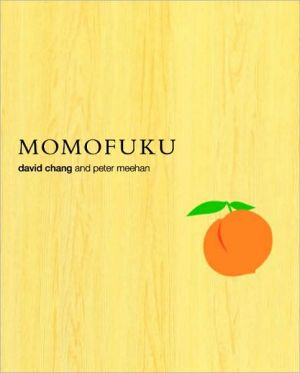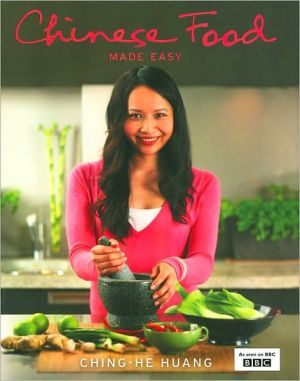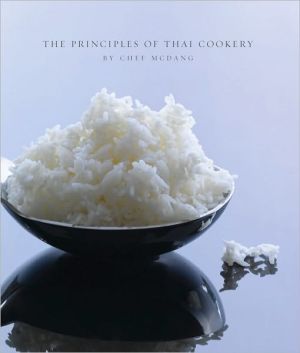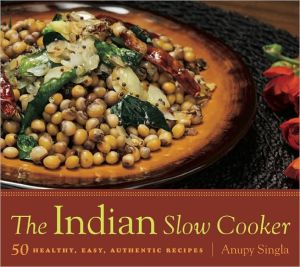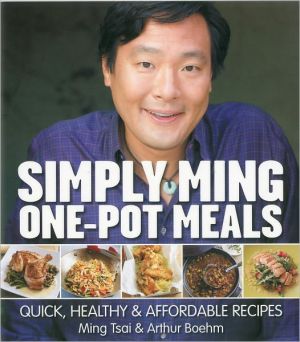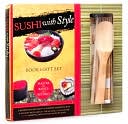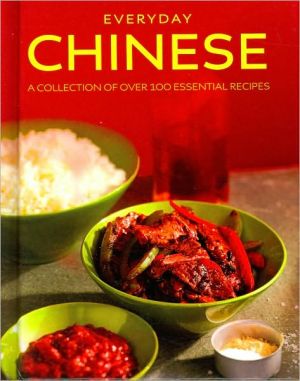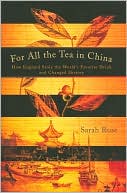Momofuku
Never before has there been a phenomenon like Momofuku. A once-unrecognizable word, it's now synonymous with the award-winning restaurants of the same name in New York City: Momofuku Noodle Bar, Ssäm Bar, Ko, and Milk Bar. Chef David Chang has single-handedly revolutionized cooking in America with his use of bold Asian flavors and impeccable ingredients, his mastery of the humble ramen noodle, and his thorough devotion to pork. \ Momofuku is both the story and the recipes behind the...
Search in google:
Never before has there been a phenomenon like Momofuku. A once-unrecognizable word, it's now synonymous with the award-winning restaurants of the same name in New York City: Momofuku Noodle Bar, Ssäm Bar, Ko, and Milk Bar. Chef David Chang has single-handedly revolutionized cooking in America with his use of bold Asian flavors and impeccable ingredients, his mastery of the humble ramen noodle, and his thorough devotion to pork. Momofuku is both the story and the recipes behind the cuisine that has changed the modern-day culinary landscape. Chang relays with candor the tale of his unwitting rise to superstardom, which, though wracked with mishaps, happened at light speed. And the dishes shared in this book are coveted by all who've dined—or yearned to—at any Momofuku location (yes, the pork buns are here). This is a must-read for anyone who truly enjoys food. The New York Times - Christine Muhlke In both food and tone, Momofuku encapsulates an exciting moment in New York dining. In 20 years, when we're all eating McKimchi burgers and drinking cereal milk, we'll look back fondly on the time when neurotic indie stoners and their love of Benton's bacon changed the culinary landscape.
Momofuku\ \ By David Chang \ Clarkson Potter\ Copyright © 2009 David Chang\ All right reserved.\ ISBN: 9780307451958 \ \ \ Ginger Scallion Noodles\ \ Our ginger scallion noodles are an homage to/out-and-out rip-off of one of the greatest dishes in New York City: the $4.95 plate of ginger scallion noodles at Great New York Noodletown down on the Bowery in Chinatown.\ \ Ginger scallion sauce is one of the greatest sauces or condiments ever. Ever. It's definitely a mother sauce at Momofuku, something that we use over and over and over again. If you have ginger scallion sauce in the fridge, you will never go hungry: stir 6 tablespoons into a bowl of hot noodles—lo mein, rice noodles, Shanghai thick noodles—and you're in business. Or serve over a bowl of rice topped with a fried egg. Or with grilled meat or any kind of seafood. Or almost anything.\ \ At Noodle Bar, we add a few vegetables to the Noodletown dish to appease the vegetarians, add a little sherry vinegar to the sauce to cut the fat, and leave off the squirt of hoisin sauce that Noodletown finishes the noodles with. (Not because it's a bad idea or anything, just that we've got hoisin in our pork buns, and too much hoisin in a meal can be too much of a good thing. Feel free to add it back.)\ \ The dish goes something like this: boil 6 ounces of ramen noodles, drain, toss with 6 tablespoons Ginger Scallion Sauce (below); top the bowl with ¼ cup each of Bamboo Shoots; Quick-Pickled Cucumbers; pan-roasted cauliflower (a little oil in a hot wide pan, 8 or so minutes over high heat, stirring occasionally, until the florets are dotted with brown and tender all the way through; season with salt); a pile of sliced scallions; and a sheet of toasted nori. But that's because we've always got all that stuff on hand. Improvise to your needs, but know that you need ginger scallion sauce on your noodles, in your fridge, and in your life. For real.\ \ ginger scallion sauce\ makes about 3 cups\ \ • 2 1/2 cups thinly sliced scallions (greens and whites; from 1 to \ 2 large bunches)\ • 1/2 cup finely minced peeled fresh ginger\ • 1/4 cup grapeseed or other neutral oil\ • 1 1/2 teaspoons usukuchi (light soy sauce)\ • 3/4 teaspoon sherry vinegar\ • 3/4 teaspoon kosher salt, or more to taste\ \ \ Mix together the scallions, ginger, oil, soy, vinegar, and salt in a bowl. Taste and check for salt, adding more if needed. Though it's best after 15 or 20 minutes of sitting, ginger scallion sauce is good from the minute it's stirred together up to a day or two in the fridge. Use as directed, or apply as needed. \ \ Continues... \ \ \ \ Excerpted from Momofuku by David Chang Copyright © 2009 by David Chang. Excerpted by permission.\ All rights reserved. No part of this excerpt may be reproduced or reprinted without permission in writing from the publisher.\ Excerpts are provided by Dial-A-Book Inc. solely for the personal use of visitors to this web site. \ \
\ From Barnes & NobleIt is likely that Manhattan food denizens will greet this book with mixed feelings. On one hand, they will welcome the opportunity to finally have the recipes of master chef David Chang's pork buns and traditional dashi; on the other, they will instantly realize that the restaurant that they once treasured as an East Village secret has now become known to the whole world. Momofuko (literally "lucky peach" in Japanese) first opened in 2003 as a modest First Avenue noodle bar. Since then, Chang and his restaurants have won several James Beard Awards and been the subject of an extended "Chef on the Edge" New Yorker article and Charlie Rose interview. This is the first book by one of the most celebrated young chefs in the county.\ \ \ \ \ Christine MuhlkeIn both food and tone, Momofuku encapsulates an exciting moment in New York dining. In 20 years, when we're all eating McKimchi burgers and drinking cereal milk, we'll look back fondly on the time when neurotic indie stoners and their love of Benton's bacon changed the culinary landscape.\ —The New York Times\ \ \ Publishers WeeklyChang, master restaurateur and chef, and Meehan, a New York Times food writer, join forces in this stellar collection of recipes from Chang's restaurants—Momofuku, Ssäm Bar and Ko. Chang is a man possessed with a deep love of ramen and a clear passion for food. This book pays tribute to the humble noodle, which Chang has elevated to a near art form, and the wide array of cuisine he serves. Filled with 150 gorgeous, full-color photos and an engrossing narrative, this book is a treat for the eye, mind and palate. Chang's special touches are seen in every dish. Chicken wings are cooked with bacon in rendered pork or duck fat, and pan-roasted asparagus are adorned with poached eggs and miso butter. Fried (or roasted) cauliflower is drizzled with fish sauce vinaigrette, and roasted New Jersey diver scallops are served with kohlrabi puree and iwa nori. Of course, recipes for noodles abound, including Momofuku ramen, ginger scallion noodles, and Alkaline Noodles. Other staples include ramen broth, ramen toppings, and rice with miso soup. Be forewarned: Chang gears the cookbook to only the most experienced of cooks, with many dishes requiring several steps. Nevertheless, Chang presents a collection both stunning and engaging. (Oct.)\ \ \ \ \ Library JournalIn his first cookbook, coauthored with food writer Meehan, culinary star Chang uses recipes and essays to trace the evolution of his Momofuku restaurant group from one struggling ramen shop to four New York City restaurants (Momofuku Noodle Bar, Milk Bar, Ssäm Bar, and Ko) lauded by the James Beard Foundation, the Michelin Guide, and numerous food publications. The first restaurant, which initially emulated ramen and noodle shops Chang had visited while teaching English in Japan, seemed likely to fail until he abandoned his original concept for a more personal approach that blended traditional preparations with unconventional or seasonal ingredients. The distinctive recipes here reflect Chang's growth as a chef and his passion for noodles and pork products. Consequently, it is not vegetarian friendly. While many recipes are technically accessible, some readers may find them too complicated or time-consuming for everyday use—some seemingly simple dishes require cooks to preassemble multiple components. VERDICT Fans of Chang's restaurants will be happy to see recipes for signature dishes like ramen, pork buns, and bo ssäm (a ten-pound pork butt). Expect demand from foodies and readers interested in celebrity chefs or restaurateurs.—Lisa Campbell, Univ. of Pittsburgh Lib. Syst.\ \
